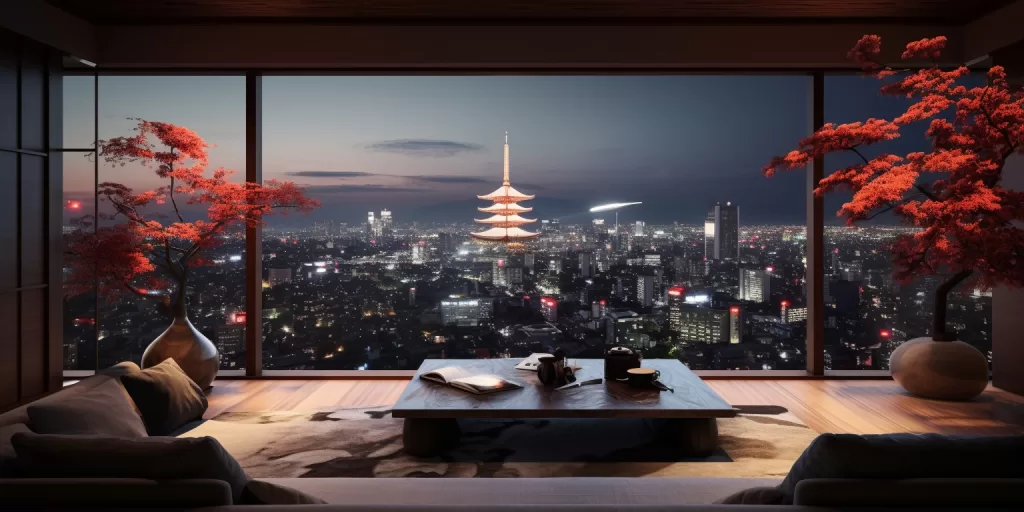20 Common Misconceptions Foreigners Have About Japanese Culture
You’ll never believe the things people get wrong about Japanese culture! From perceptions of etiquette to housing and entertainment, foreigners often misunderstand the realities of daily life in Japan. Read on as we debunk the biggest misconceptions people have about Japanese language, customs, lifestyle, and more.
1. Tattoos are illegal

Taboos and stigmas against tattoos persist in Japan, rooted in associations with organized crime syndicates (yakuza). But laws and attitudes are evolving. As of 2001 tattoos are no longer regulated differently than other medical procedures. An increasing number of facilities allow tattooed visitors.
While restrictions remain in some spaces like hot springs, overall sentiments are shifting to accept tattoos as self-expression. The notion that tattoos are broadly illegal and forbidden is outdated. Tattoo culture faces challenges in Japan but is carving out space.
2. The Japanese are workaholics

The image of Japanese salarymen working long, tedious hours is not imagined, but it is also not the full story. While some Japanese workers stay late at the office out of loyalty and devotion, others are just going through the motions and seeking to avoid going home to their wife and kids. Rigid seniority systems mean that effort and merit do not always correlate to career advancement, which diminishes motivation.
Presenteeism and impressions often matter more than productivity. So the workaholic perception partly reflects an inflexible corporate structure rather than an inherently diligent workforce. Like workers in any culture, the Japanese range from devoted to disengaged in their attitudes toward work.
3. Japan is very expensive

The image of Japan as prohibitively expensive persists though the yen has weakened and costs have moderated over time. While Tokyo remains one of the pricier world cities, housing and dining costs in Japan overall compare reasonably to other developed nations. Public transportation is affordable and efficient.
Outside of luxury items and real estate in certain neighborhoods, everyday costs for housing, food, and basic services are not exorbitantly high for Japan’s development level. Saving strategies allow reasonable travel and shopping. The perception of Japan as expensive reflects outdated exchange rates and concentrations of luxury rather than practical daily costs.
4. Japanese people are extremely racist
An ethnically homogeneous society for most of its history, Japan is going through growing pains of opening up and accepting diversity. Racism and xenophobia undeniably persist in segments of society. But polls consistently show generational shifts toward openness. Many young Japanese advocate for broader multiculturalism.
While intolerant attitudes still demand remedy, the notion of an unwelcoming or hateful Japanese public is overgeneralized. Like many countries, Japan is grappling with these issues and making gradual progress. Japanese people overall are not necessarily more or less racially biased than other societies.
5. Japan is a futuristic high-tech wonderland
While Japan is known for advanced technology like robotics, bullet trains, and top-tier electronics, in many ways it still relies heavily on outdated technology. Fax machines are still common in businesses. Office processes often remain paper-based and inefficient compared to Western firms.
The image of Japan as a futuristic wonderland is largely a relic of the technology boom of the 1980s. While parts of Japan are highly advanced, the country as a whole contrasts modernity with antiquated practices. The futuristic sheen wears off for many foreigners when they experience Japan beyond the glossy image.
6. The Japanese are extremely polite
It is true that Japanese manners and etiquette tend to be refined and formal. Customs like bowing show respect, and Japanese retail and service staff often excel at hospitality. However, some remarks on personal appearance and questions about age that Westerners would find rude or inappropriate are more socially acceptable in Japan.
Likewise, sarcasm tends to perplex Japanese people rather than come across as humor. While cultural differences make it difficult to directly compare, the Japanese are not necessarily more “polite” than Westerners across the board. The formality and traditions of etiquette have upsides and downsides that challenge the narrative of Japanese people being universally polite.
7. Everyone in Japan knows karate
Karate originated in Japan and is widely practiced. However, only around 2% of Japanese are black belts. Most practice martial arts for exercise, spiritual development, or recreational interest rather than hardcore discipline. With modern lifestyles, few Japanese view martial arts training as practical self-defense.
The number of true martial arts experts is small. While popular media often associates Japan with martial arts masters, this image is detached from everyday reality. For most Japanese, karate is not integral to their lives.
8. The Japanese only eat sushi
Sushi makes Japanese cuisine famous worldwide. But within Japan, sushi is seen as high-end fare for special occasions rather than daily eating. The expense of quality seafood and preparation restricts how often Japanese people eat sushi.
A typical Japanese meal centers on rice, miso soup, fish, meat, tofu, vegetables, and other staple foods. Sushi represents just a small part of the diverse culinary traditions in Japanese culture. While sushi defines Japanese cuisine abroad, domestically it is a small facet of what most Japanese people eat regularly.
9. Japan is very crowded
Photos of crowded Tokyo streets and packed subway cars fuel perceptions of Japan as overwhelmingly crowded. In reality, Tokyo accounts for only about 10% of Japan’s population. Declining birth rates and aging populations have led to underpopulation in many rural areas.
Japan as a whole faces population decline in the coming decades rather than overcrowding. Crowding issues affect major metropolises but not most of the country. Population is shifting away from rural regions. So while iconic images show crowded spaces, Japan has the opposite problem in many areas.
10. The Japanese are obsessed with anime
Japanese anime and manga enjoy worldwide popularity. But within Japan, enthusiasts represent a subculture rather than the mainstream. Some Japanese are serious otaku (fans), but most are not deeply invested.
Appreciation for anime and manga varies generationally as well. While the content originiates in Japan, it is a specific interest rather than national obsession. Interest in anime and manga is a niche within Japanese society, not a defining trait of the culture.
11. Geisha are prostitutes
The intricate world of geisha is shrouded in misconceptions abroad, especially regarding their profession. Geisha are entertainers, skilled in traditional arts like music, dance, games, and conversation. Their role is to entertain guests through companionship and performance, not intimate acts.
The misconception of geisha as intimate company stems from confusion between geisha and oiran, courtesans from feudal Japan whose role included intimate labor. While geisha may have had intimate relationships, their profession itself does not involve intimacy. Geisha are artists and performers, not intimate company.
12. Everyone in Japan wears a kimono
The elegant kimono is globally recognized as traditional Japanese dress. But in daily life, most Japanese people wear Western style clothing. Kimono are often expensive and reserved for special occasions like festivals, ceremonies, graduations, and weddings.
They require intricate steps to put on. While iconic, kimono are not everyday wear for modern Japanese people. Kimono endure as elegant traditional dress, but are not the norm outside of special contexts.
13. Japan still has samurai
The samurai class was abolished in the late 1800s as Japan modernized and transitioned from feudal society. Martial skills and bushido values transitioned into military service.
While samurai history lives on through artifacts, architecture, descended families, and traditions, there are no more individuals who function as samurai. Stories of modern samurai are mythologized rather than accurate. The samurai are an important historic legacy, but no longer exist in their original form.
14. Japanese people are extremely shy
Japanese people can appear reserved, especially compared to loud and gregarious foreigners. But in interactions with friends and close contexts, Japanese people behave as dynamically as any culture, conversing, laughing, and celebrating. Social rules dictate more reservation in public than some cultures, but in private settings outgoing personalities flourish.
While foreigners can perceive shyness, actual social anxiety is not especially prevalent in Japan. The reserved public image contrasts with openness among close relationships. Perceived shyness reflects customs rather than inherent introversion.
15. Japan has very few Christians
Christianity has always been a minority religion in Japan at around 1-2% of the population. Most Japanese identify as Buddhist or Shintoist, and Christianity was suppressed at some historical moments. However, Christian influences pervade Japanese culture through traditions like Christmas.
Many Japanese celebrate Christmas commercially without religious significance. Christian weddings are also popular. So while most Japanese do not identify as Christian, Christian elements and celebrations integrate into secular culture. Christianity’s minority presence belies subtle influence.
16. Japanese people bow constantly
Bowing remains important in Japanese culture for showing respect. But the frequency varies by social context. In public or formal situations, bowing etiquette remains strong. But in casual settings, bowing is rarely expected.
Younger generations tend to forgo bowing regularly, similar to declining formality worldwide. Handshakes are now common in business and introductions. While bowing endures in formal situations, it does not dominate day-to-day interactions. Casual social arenas do not require perpetual bowing.
17. All Japanese people use chopsticks
Chopsticks remain the default utensil for meals in Japan. But forks, spoons, and knives are also regularly used based on the food being eaten. Some Japanese foods like curry rice or pancakes are eaten with forks or spoons rather than chopsticks.
At restaurants with non-Japanese cuisine, Western utensils are provided. Chopsticks have not replaced forks and knives even in Japan. Japanese etiquette dictates using chopsticks for most meals, but pragmatic utensil choices also prevail.
18. Japanese people live in traditional housing
While temples, shrines, and some old architecture retain traditional Japanese housing styles, most modern housing looks similar to Western norms. Apartments and houses predominately have Western-style rooms and furnishings. Tatami mat rooms are less common outside historical buildings.
Much housing lost traditional traits as Western influence modernized Japan. While evocative of history, traditional Japanese homes are not the mode of modern daily life. Most Japanese people reside in contemporary dwellings like people in other industrialized nations.
19. Japanese people slurp noodles loudly
The slurping of noodles draws much attention overseas as a Japanese custom. While slurping does help properly enjoy hot noodles, it is not universally considered mandatory etiquette. Some Japanese people slurp noodles loudly because it is acceptable, but others consider it rude public behavior.
Not everyone slurps noodles, and doing so gently rather than loudly can be favored. Slurping noodles exists alongside other varied dining manners. For Japanese people, slurping noodles falls into a gray area of etiquette rather than black or white.
20. Japan has weird game shows
Japanese television sometimes features wacky game shows with bizarre challenges and absurd prizes. But the majority of Japanese game and variety shows are fairly mundane compared to the most outlandish clips that go viral abroad. Outrageous shows lampshade over-the-top scenarios rather than reflect typical entertainment.
Just as staged reality television does not depict actual reality, extreme Japanese game shows highlight absurdities rather than everyday norms of Japanese broadcasting or culture. Most Japanese television is quite ordinary